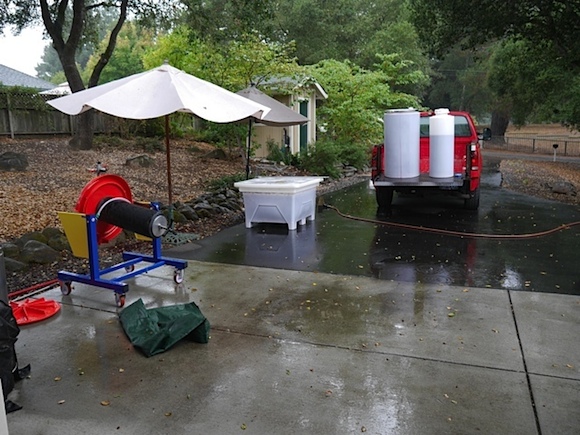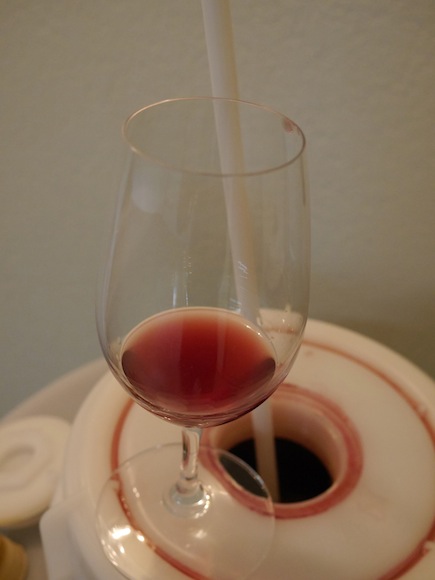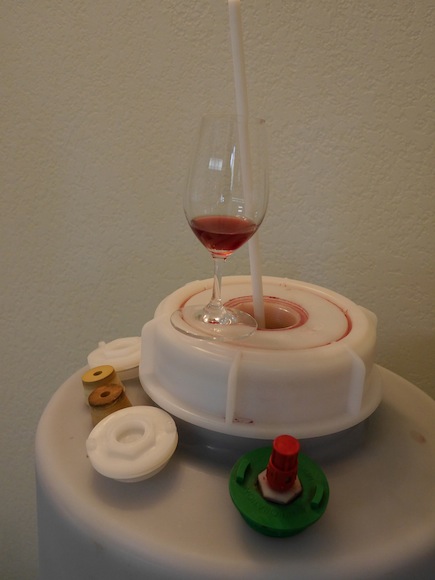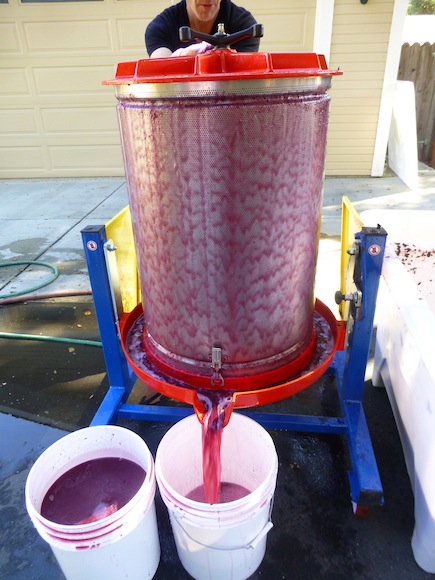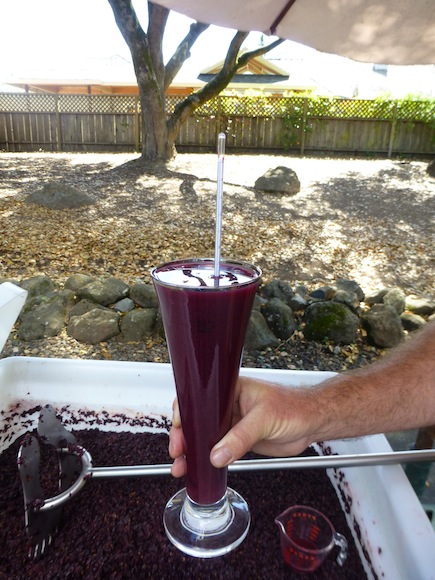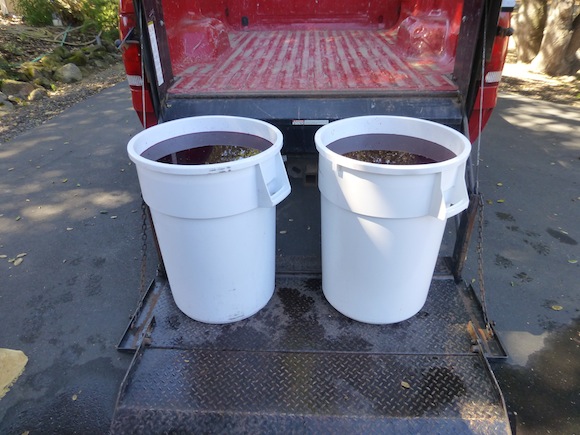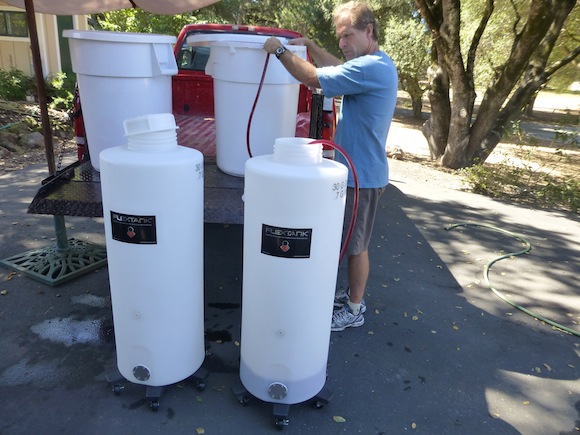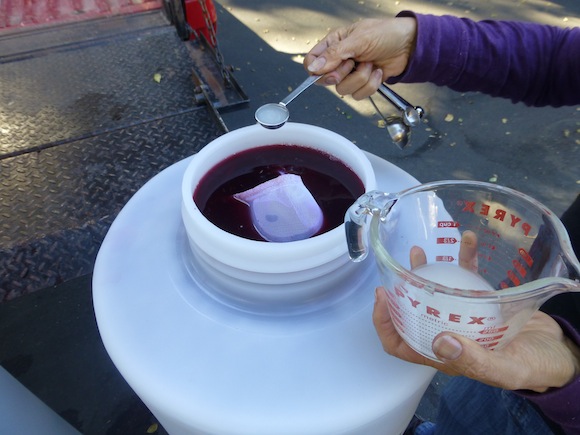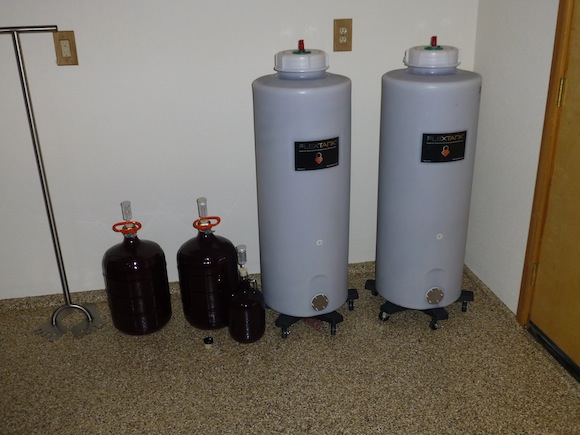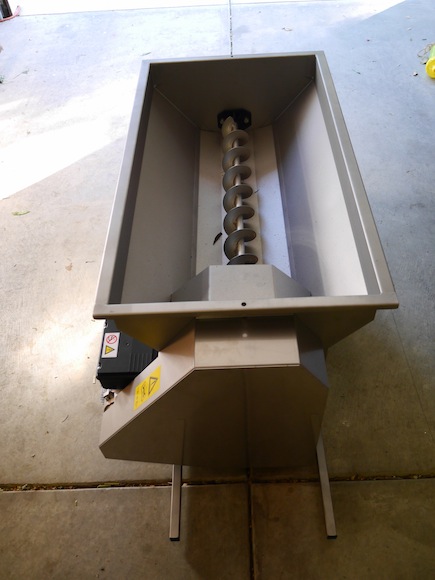It rained today, September 18th here in Sebastopol. Not a surprise in most parts of the country, but here it is big news during harvest as the moisture can ruin your crop. We picked our Pinot last Tuesday/Wednesday/Thursday so that is safe. Our Sauvignon Blanc is still hanging for another month or so…so I blew them off and sprayed them today.
On Sunday we will pick the seconds from the Pinot and some rogue Merlot to either make a Rose or a low alcohol field blend. Will have to see how it tastes.
As to the picture…we have the press on the left, 1100 pounds of fermenting Pinot in the middle (clone 667), and 95 gallons of pressed Pinot (clone Pommard) on the right. I’m really looking forward to how the Pinot’s turn out this year as I let them naturally ferment before inoculating with yeast. Should add complexity.
